Effect of Roller Levelling on Tensile Properties of Aluminum Sheets
Abstract
1. Introduction
2. Materials and Methods
2.1. Materials
2.2. Mechanical Model
2.3. Material Model
3. Results
Tensile Test Results
4. Discussion
4.1. Analysis of Tensile Test Results
4.2. Comparison of the New Mechanical Model with Experimental Results
5. Conclusions
- The tested roller levelling process caused an average increase in yield strength of 14% for AlMg3 and 18% for AlMg4.5, while tensile strength changed by less than 1%.
- The theoretical model developed on the basis of levelling parameters and initial sheet properties correctly describes the increase in yield strength due to roller levelling calculated from the inhomogeneous deformation of the sheet, and this was clearly confirmed by comparison with experimental results.
- The value of the hardening exponent decreased by approximately 15% for both sheets, while the average normal anisotropy did not change.
- With regard to the change in the property ratios of levelled and not levelled samples, it was found that a higher yield strength is associated with a lower increase ratio, i.e., the samples hardened during production will suffer less increase in yield strength than the annealed versions.
- This phenomenon is inversely related to the uniform elongation, the elongation at break and the hardening exponent. The greater the elongation and hardening exponent of the not levelled sample, the higher their relative decrease.
Author Contributions
Funding
Institutional Review Board Statement
Informed Consent Statement
Data Availability Statement
Conflicts of Interest
References
- Doege, E.; Menz, R.; Huinink, S. Analysis of the levelling process based upon an analytic forming model. CIRP Ann. 2002, 51, 191–194. [Google Scholar] [CrossRef]
- Cui, L.; Shi, Q.-Q.; Liu, X.-H.; Hu, X.-L. Residual Curvature of Longitudinal Profile Plate Roller in Leveling Process. J. Iron Steel Res. Int. 2013, 20, 23–27. [Google Scholar] [CrossRef]
- Silvestre, E.; Mendiguren, J.; Galdos, L.; de Argandoña, E.S. Influence of the Number of Tensile/Compression Cycles on the Fitting of a Mixed Hardening Material Model: Roll Levelling Process Case Study. Key Eng. Mater. 2013, 554–557, 2375–2387. [Google Scholar] [CrossRef]
- Silvestre, E.; de Argandoña, E.S.; Galdos, L.; Mendiguren, J. Testing and Modeling of Roll Levelling Process. Key Eng. Mater. 2014, 611–612, 1753–1762. [Google Scholar] [CrossRef]
- Shinkin, V.N. Arithmetical method of calculation of power parameters of 2N-roller straightening machine under flattening of steel sheet. CIS Iron Steel Rev. 2017, 22–27. [Google Scholar] [CrossRef]
- Guan, B.; Zhang, C.; Zang, Y.; Wang, Y. Model for the Whole Roller Leveling Process of Plates with Random Curvature Distribution Based on the Curvature Integration Method. Chin. J. Mech. Eng. 2019, 32, 47. [Google Scholar] [CrossRef]
- Liu, Z.; Luo, Y.; Wang, Y.; Liao, T.W.; Deng, M. An analytical study of optimal roller intermeshes for the plate leveling process. Proc. Inst. Mech. Eng. Part B J. Eng. Manuf. 2020, 235, 278–289. [Google Scholar] [CrossRef]
- Yi, G.; Liang, Y.; Wang, C.; Xu, J. Evolution of Residual Stress Based on Curvature Coupling in Multi-Roll Levelling. Appl. Sci. 2019, 9, 4975. [Google Scholar] [CrossRef]
- Yi, G.; Wang, Z.; Hu, Z. A Novel Modeling Method in Metal Strip Leveling Based on a Roll-Strip Unit. Math. Probl. Eng. 2020, 2020, 1–16. [Google Scholar] [CrossRef]
- Perzynski, K.; Pyzynski, K.; Swierczynski, S.; Pidvysots’Kyy, V.; Klis, J.; Madej, L. Influence of the roll leveler setup parameters on the quality of high-strength steel leveling operation. Int. J. Adv. Manuf. Technol. 2022, 120, 1203–1217. [Google Scholar] [CrossRef]
- Kotov, K.A.; Bolobanova, N.L.; Nushtaev, D.V. Modeling the Stress State of a Steel Strip with a Roller Leveling Machine under Cyclic Alternating Deformations. Steel Transl. 2020, 50, 750–755. [Google Scholar] [CrossRef]
- Gribkov, E.P.; Kovalenko, A.K.; Hurkovskaya, S.S. Research and simulation of the sheet leveling machine manufacturing capabilities. Res. Sq. 2021, preprint. [Google Scholar] [CrossRef]
- Grüber, M.; Hirt, G. A strategy for the controlled setting of flatness and residual stress distribution in sheet metals via roller levelling. Procedia Eng. 2017, 207, 1332–1337. [Google Scholar] [CrossRef]
- Grüber, M.; Hirt, G. Investigation of correlation between material properties, process parameters and residual stresses in roller levelling. Procedia Manuf. 2018, 15, 844–851. [Google Scholar] [CrossRef]
- Kuo, S.-K.; Ou, Y.-L.; Wang, D.-A. An Analytical Model for Stress and Curvature Prediction of a Strip Leveling Process. Metals 2022, 12, 757. [Google Scholar] [CrossRef]
- Grüber, M.; Kümmel, L.; Hirt, G. Control of residual stresses by roller leveling with regard to process stability and one-sided surface removal. J. Mater. Process. Technol. 2020, 280, 116600. [Google Scholar] [CrossRef]
- Tsai, S.-Y.; Chang, J.-Y. Design of deep learning on intelligent levelling system for industry 4.0 technology. MATEC Web Conf. 2018, 185, 26. [Google Scholar] [CrossRef]
- Jamli, M.; Farid, N. The sustainability of neural network applications within finite element analysis in sheet metal forming: A review. Measurement 2019, 138, 446–460. [Google Scholar] [CrossRef]
- Tsai, S.-Y.; Chang, J.-Y. Regression Approach to a Novel Lateral Flatness Leveling System for Smart Manufacturing. Appl. Sci. 2021, 11, 6645. [Google Scholar] [CrossRef]
- Kim, J.; Park, K.-C.; Kim, D.-N. Investigating the fluting defect in v-bending due to the yield-point phenomenon and its reduction via roller-leveling process. J. Mater. Process. Technol. 2019, 270, 59–81. [Google Scholar] [CrossRef]
- Mkaddem, A.; Bahloul, R.; Santo, P.D.; Potiron, A. Experimental characterisation in sheet forming processes by using Vickers micro-hardness technique. J. Mater. Process. Technol. 2006, 180, 1–8. [Google Scholar] [CrossRef]
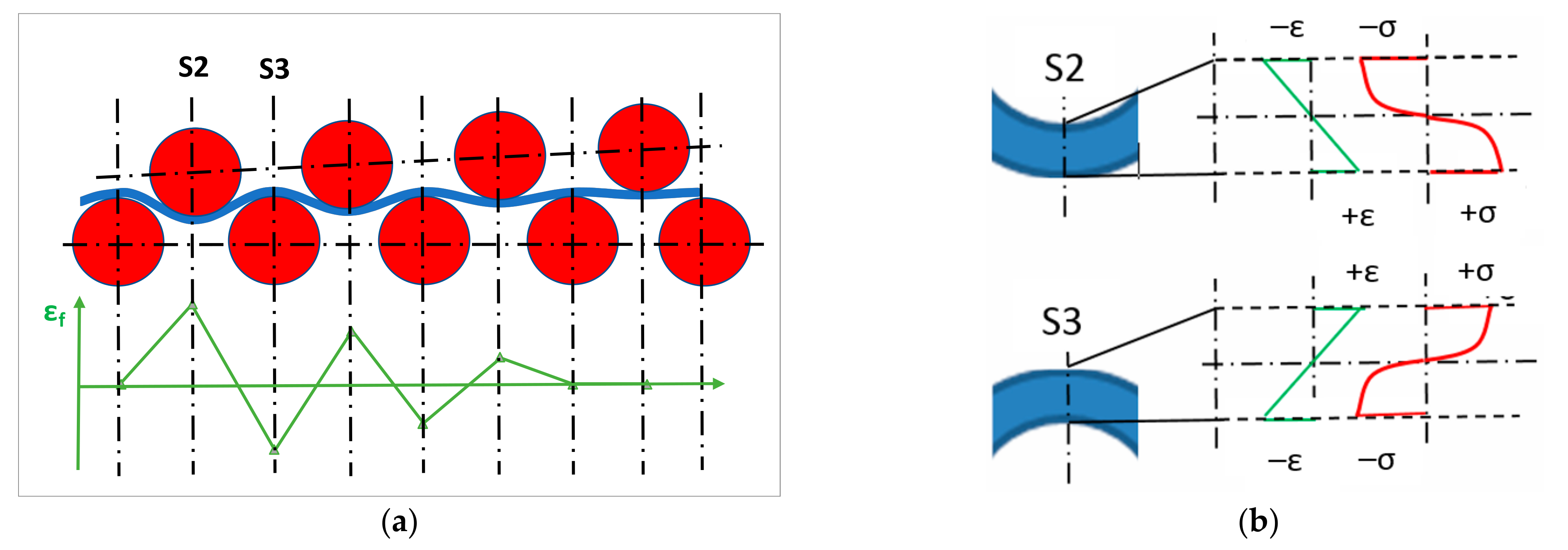

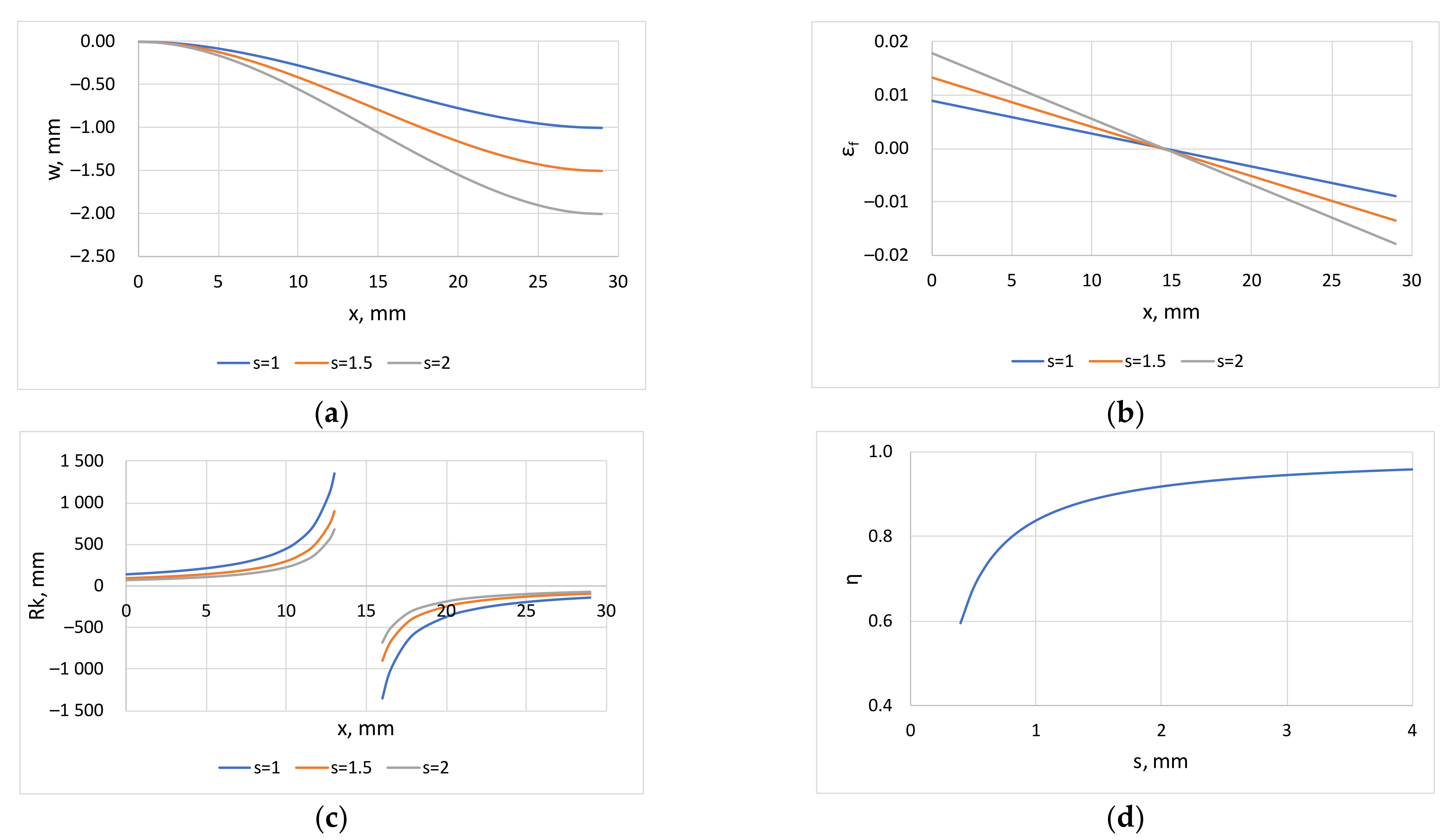

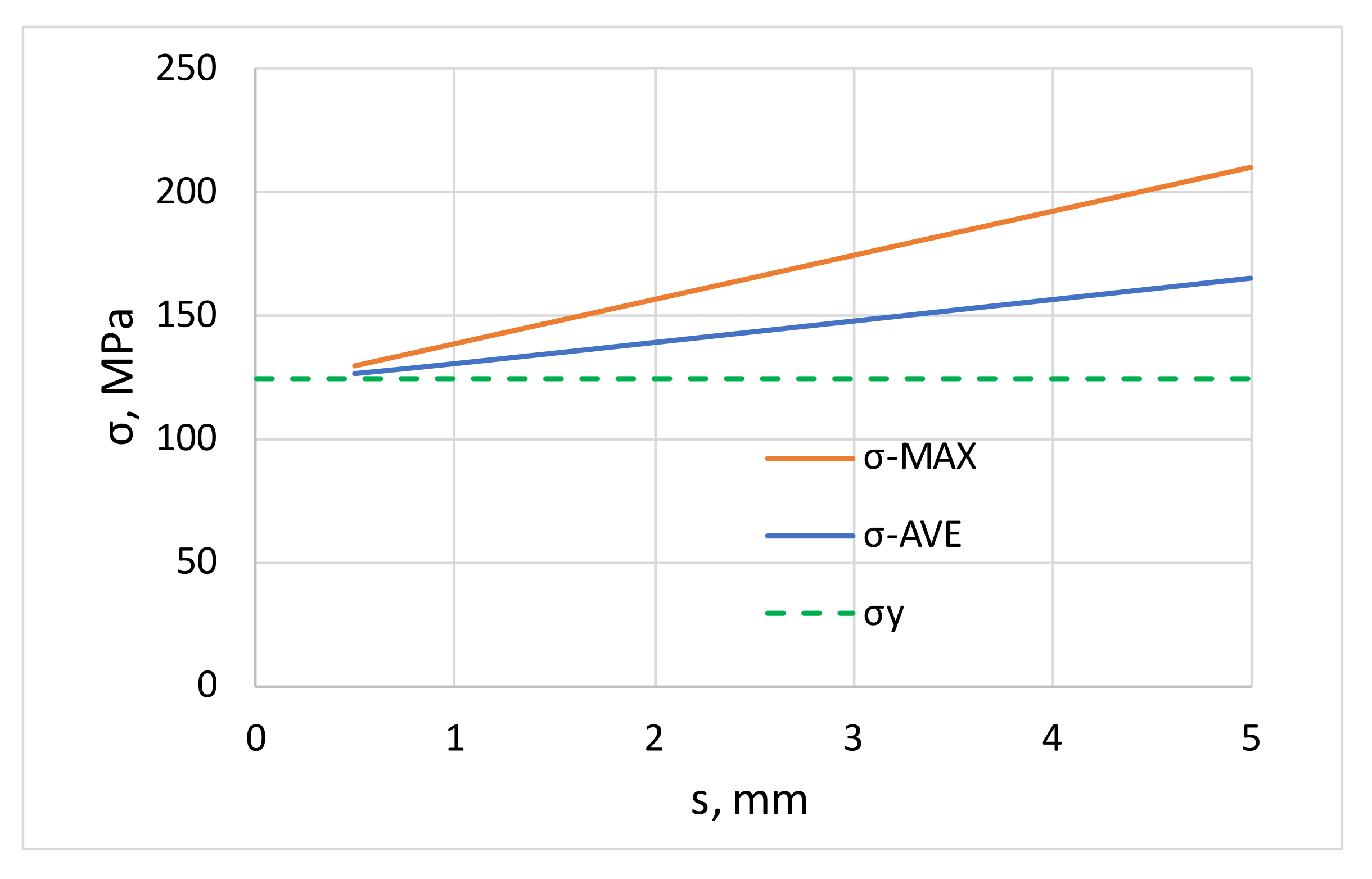

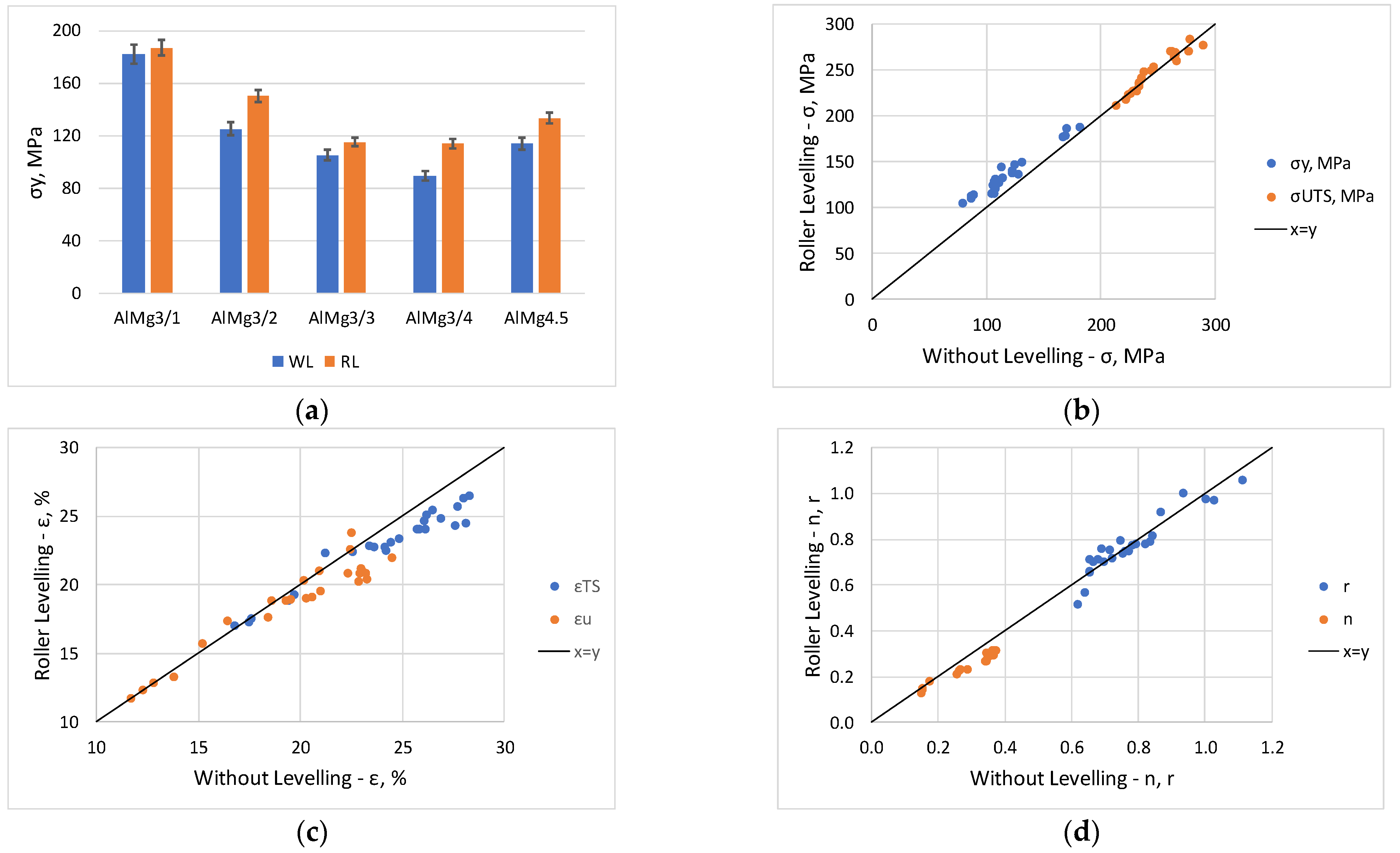

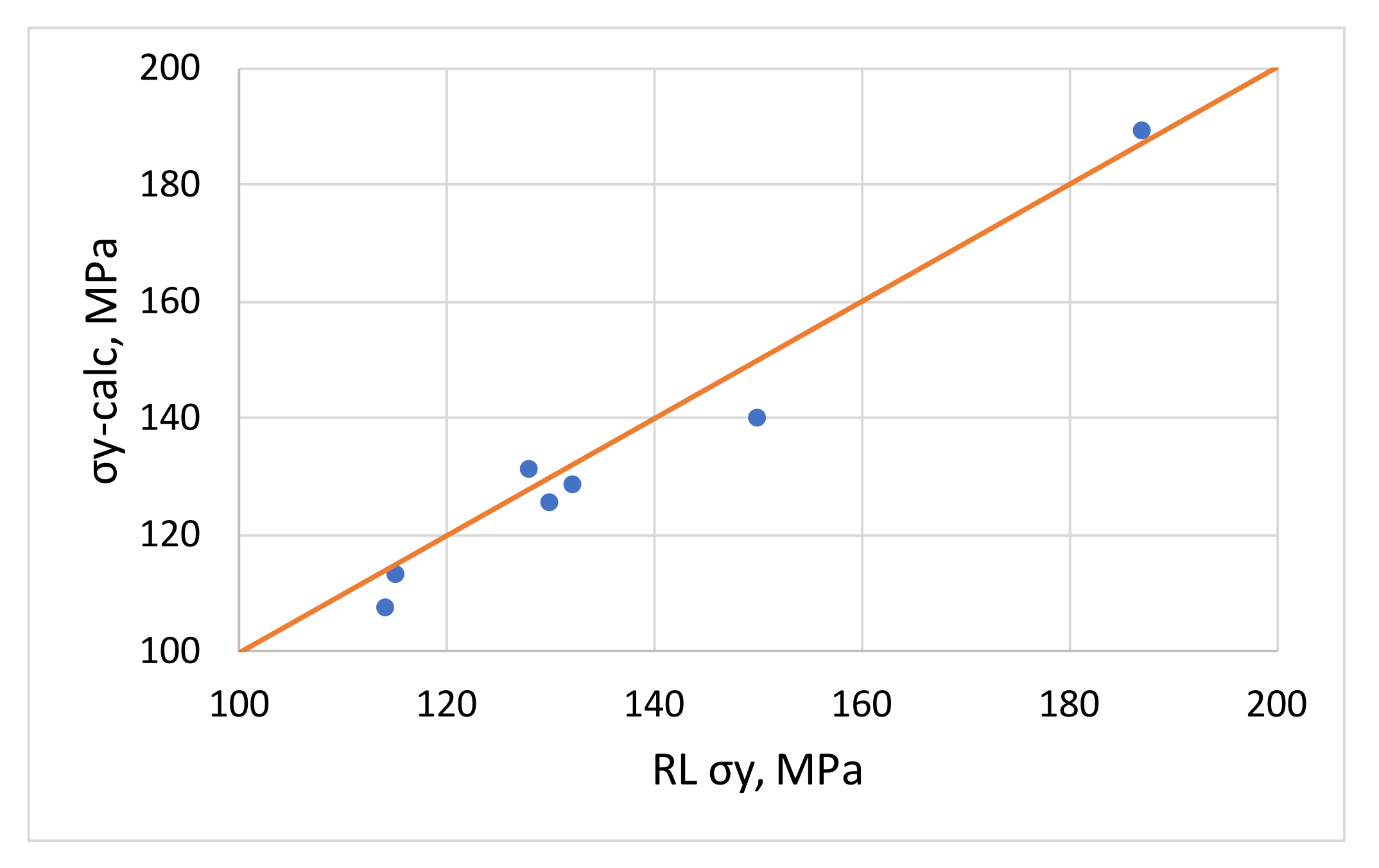
| Alloys | Mg (wt.%) | Fe (wt.%) | Si (wt.%) | Mn (wt.%) |
|---|---|---|---|---|
| AlMg3 | 3.30 | 0.11 | 0.05 | 0.33 |
| AlMg4.5 | 4.69 | 0.11 | 0.09 | 0.25 |
| Cold rolling | CR 15% | A 320 °C/2 h | CR 5% | AlMg3/1 | ||
| CR 15% | A 320 °C/2 h | CR 5% | SR 270 °C/2 h | AlMg3/2 | ||
| CR 20% | A 320 °C/2 h | AlMg3/3 | ||||
| A 320 °C/2 h | CR 20% | A 320 °C/2 h | AlMg3/4 |
| AlMg3 | σy, MPa | σUTS, MPa | εu, % | εTS, % | n | r |
|---|---|---|---|---|---|---|
| AVE (WL) | 122.26 | 231.94 | 18.00 | 23.09 | 0.28 | 0.75 |
| AVE (RL) | 139.34 | 234.52 | 17.43 | 22.30 | 0.24 | 0.75 |
| RL/WL | 1.14 | 1.01 | 0.97 | 0.96 | 0.85 | 0.99 |
| AlMg4.5 | ||||||
| AVE (WL) | 111.67 | 269.67 | 22.52 | 25.88 | 0.360 | 0.818 |
| AVE (RL) | 132.11 | 271.33 | 21.44 | 24.06 | 0.309 | 0.831 |
| RL/WL | 1.18 | 1.01 | 0.95 | 0.93 | 0.86 | 1.02 |
| S = 2.16 mm | RL σy | σy-Calc | Error % |
|---|---|---|---|
| AlMg3/1 RD | 187 | 189.24 | 1.20 |
| AlMg3/2 RD | 150 | 140.37 | −6.42 |
| AlMg3/3 RD | 115 | 112.46 | −2.21 |
| AlMg3/4 RD | 114 | 107.60 | −5.61 |
| AlMg4.5-RD | 128 | 131.41 | 2.66 |
| AlMg4.5-DD | 132 | 128.58 | −2.59 |
| AlMg4.5-TD | 130 | 125.74 | −3.28 |
Disclaimer/Publisher’s Note: The statements, opinions and data contained in all publications are solely those of the individual author(s) and contributor(s) and not of MDPI and/or the editor(s). MDPI and/or the editor(s) disclaim responsibility for any injury to people or property resulting from any ideas, methods, instructions or products referred to in the content. |
© 2023 by the authors. Licensee MDPI, Basel, Switzerland. This article is an open access article distributed under the terms and conditions of the Creative Commons Attribution (CC BY) license (https://creativecommons.org/licenses/by/4.0/).
Share and Cite
Harangozó, D.; Czinege, I. Effect of Roller Levelling on Tensile Properties of Aluminum Sheets. Materials 2023, 16, 3001. https://doi.org/10.3390/ma16083001
Harangozó D, Czinege I. Effect of Roller Levelling on Tensile Properties of Aluminum Sheets. Materials. 2023; 16(8):3001. https://doi.org/10.3390/ma16083001
Chicago/Turabian StyleHarangozó, Dóra, and Imre Czinege. 2023. "Effect of Roller Levelling on Tensile Properties of Aluminum Sheets" Materials 16, no. 8: 3001. https://doi.org/10.3390/ma16083001
APA StyleHarangozó, D., & Czinege, I. (2023). Effect of Roller Levelling on Tensile Properties of Aluminum Sheets. Materials, 16(8), 3001. https://doi.org/10.3390/ma16083001




